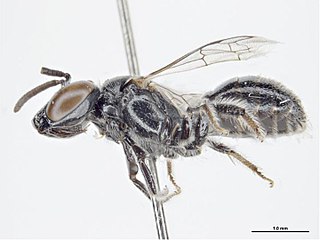
The yellow-bellied flycatcher is a small insect-eating bird of the tyrant flycatcher family.

Raorchestes flaviventris is a species of arboreal, nocturnal, frog of the family Rhacophoridae. It is endemic to the Western Ghats, South India. Its common name is yellow-bellied bush frog.

The yellow-bellied greenbul is a species of songbird in the bulbul family, Pycnonotidae. It is found in eastern, southern and west-central Africa. Its natural habitats are subtropical or tropical dry forests, subtropical or tropical moist lowland forests, and dry savanna.

The yellow-bellied prinia is a species of bird in the Cisticolidae family. It is found in Pakistan, the southern Himalayan foothills, the northeastern Indian subcontinent and Southeast Asia.

The warbling doradito is a species of bird in the family Tyrannidae. It is found in swamps and riparian habitats in central and northern Argentina, Paraguay, Uruguay and southern Brazil. The population breeding in Chile and western Argentina has usually also been included in the warbling doradito. It is visually extremely similar, but vocally distinctive and has recently been recognized as a separate species, the ticking doradito.

Eufriesea is a genus of euglossine bees. Like all orchid bees, they are restricted to the Neotropics.

Euglossa is a genus of orchid bees (Euglossini). Like all their close relatives, they are native to the Neotropics; an introduced population exists in Florida. They are typically bright metallic blue, green, coppery, or golden.

Eulaema is a genus of large-bodied euglossine bees that occur primarily in the Neotropics.

Exaerete is a genus of euglossine bees found from Mexico to northern Argentina. Like all orchid bees, they are restricted to the Neotropics. All but one species is metallic green, and they are cleptoparasites in the nests of other euglossines in the genera Eufriesea and Eulaema. It contains the following species:

The Australasian figbird, also known as the green figbird, is a conspicuous, medium-sized passerine bird native to a wide range of wooded habitats in northern and eastern Australia, southern New Guinea, and the Kai Islands. It is common in large parts of its range, and occurs in numerous protected areas. Consequently, it is rated as Least Concern by BirdLife International and the IUCN.

Apiomerus flaviventris, a bee assassin bug, is an insect that feeds on bees. It is found in arid and semiarid southwestern North America. This bee assassin is known to extract plant resins and apply them as defensive chemicals to its eggs, protecting the eggs from predation, especially by ants, but possibly also other species. Females of A. flaviventris collect resin from brittlebush, Encelia farinosa Gray ex Torr. (Asteraceae).
Heinrich Friese was a German biologist and entomologist, specialist of bees.

Euglossa hyacinthina, is a species of the orchid bee tribe Euglossini in the family Apidae. With a tongue that can get up to as long as 4 cm, this orchid bee species is found in Central America. Living in a neotropical climate, E.hyacinthina has adapted to hot and humid weather. The bee has darkly shaded, translucent wings and a metallic, glossy blue skeleton.
Braunsapis flaviventris is a species of bee belonging to the family Apidae subfamily Xylocopinae.

Exaerete smaragdina is a species of kleptoparasitic euglossine bees.

Eufriesea surinamensis belongs to the tribe of euglossine bees and as such is a species of orchid bee. This should not be mistaken with the species group surinamensis, which includes Ef. surinamensis among other Eufriesea species. These bees have been observed to return to their nests from distances as far as 23 km.

Braunsapis is a genus of bees in the tribe Allodapini. It is the largest genus of the tribe and is known for its array of social behaviors. The genus is distributed in the Africa, Asia, and Australasia.


















